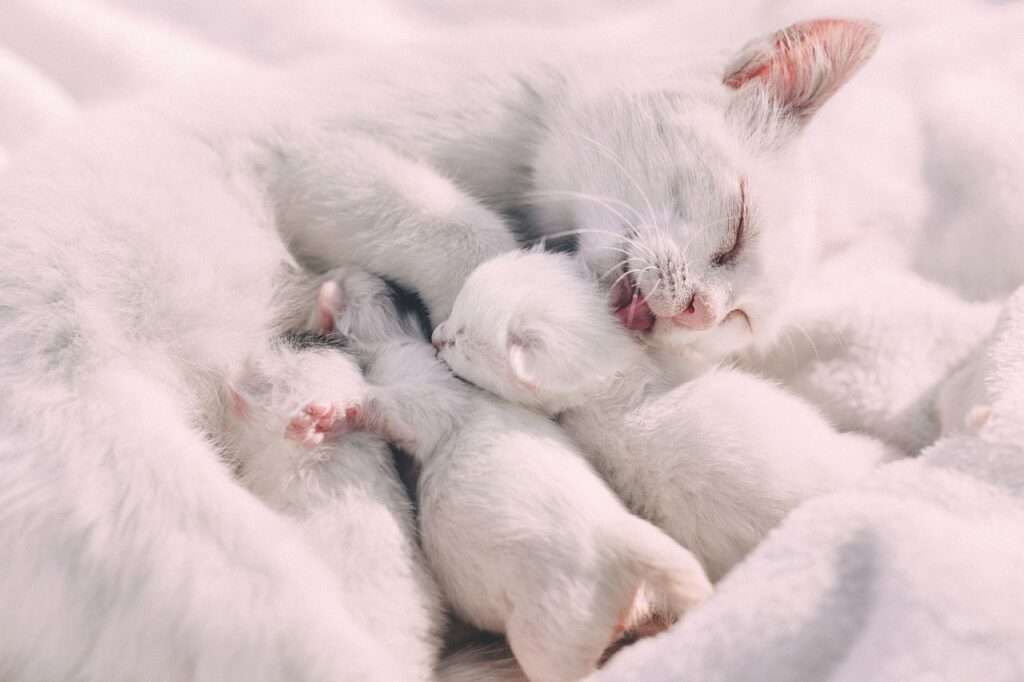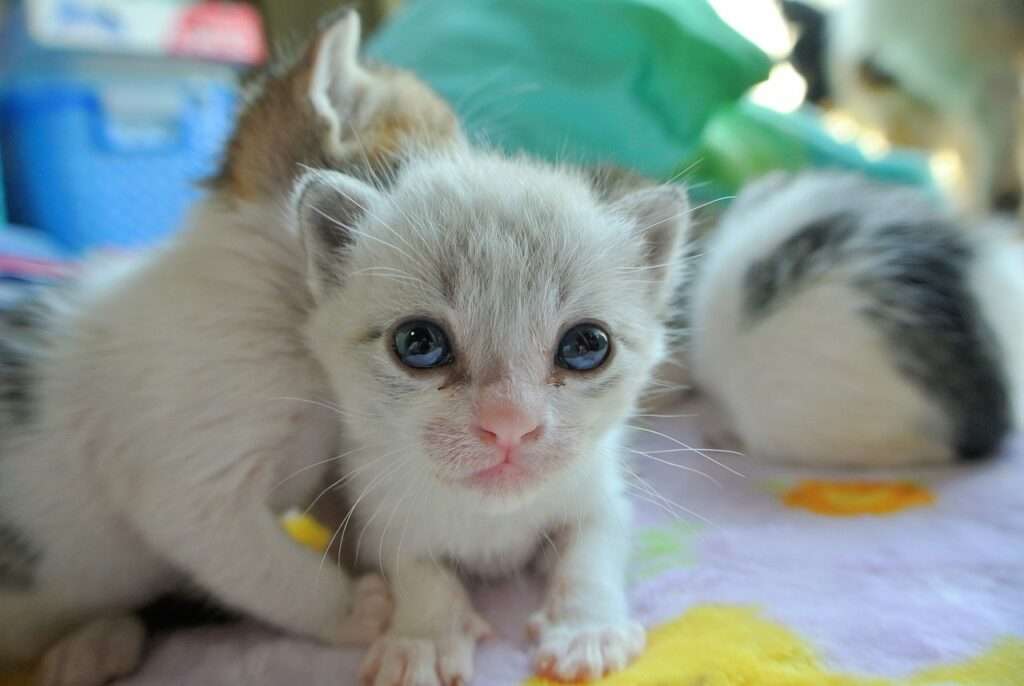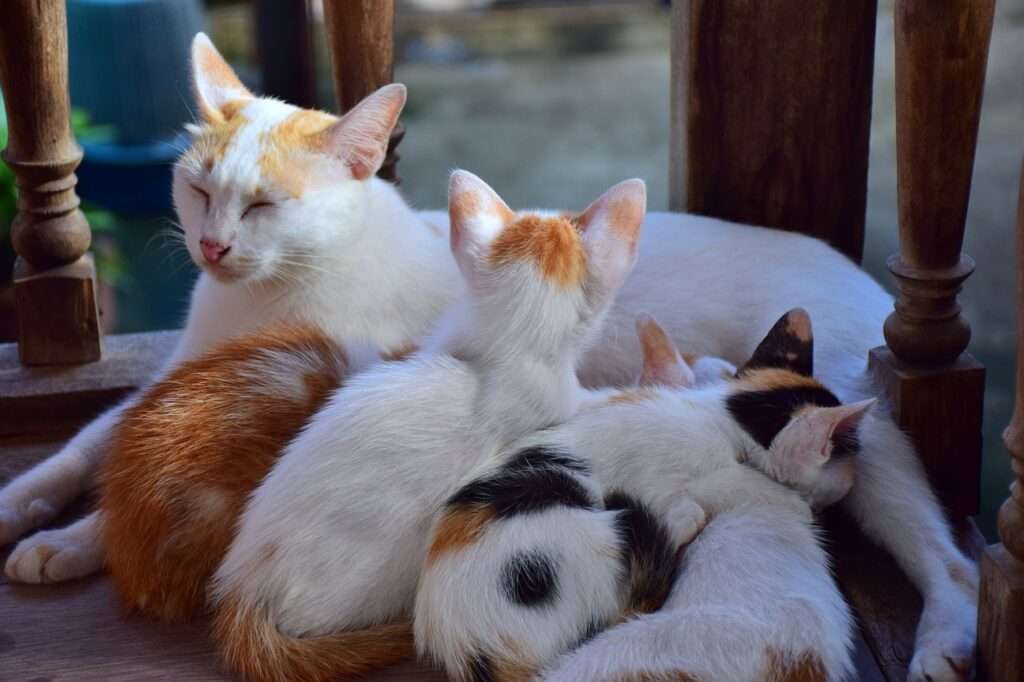When Can Kittens Leave Their Mom? Expert Answers Revealed!
Welcoming a new litter of kittens into the world is a joyous occasion, filled with excitement and anticipation. As these tiny bundles of fur begin to explore their surroundings and grow, questions often arise about when it’s appropriate for them to leave their mother’s side. Understanding the timing of this transition is crucial for ensuring the health and well-being of both the kittens and their mother.
In this comprehensive guide, we’ll delve into the topic of when can kittens leave their mom, exploring the factors that influence this decision and providing valuable insights for prospective kitten owners. From the importance of maternal care to the physical and social milestones kittens must reach, we’ll cover everything you need to know to make informed decisions about the timing of separation.
Understanding the Importance of Maternal Care

Before we dive into the specifics of when kittens can leave their mother, let’s first explore the critical role that maternal care plays in their early development. A mother cat provides essential care and guidance to her kittens during the first few weeks of life, laying the foundation for their physical, social, and behavioral well-being.
During this crucial period, a mother cat offers warmth, nourishment, and protection to her kittens, ensuring they receive the necessary nutrients for growth and development. Additionally, she teaches them important skills such as grooming, using the litter box, and interacting with other cats through gentle discipline and socialization.
As we continue our exploration, we’ll delve deeper into the importance of maternal care and its impact on a kitten’s overall development. By understanding the vital role that a mother cat plays in her kittens’ lives, we can better appreciate the significance of timing when it comes to separation.
When Can Kittens Leave Their Mom?
As adorable as they are, there comes a time when kittens need to spread their wings and venture out on their own. But determining the right time for this transition requires careful consideration of several factors. While there’s no one-size-fits-all answer, understanding the critical period when kittens can leave their mom is essential for ensuring their health and happiness.
Every kitten develops at their own pace, but as a general guideline, most experts recommend that kittens stay with their mother until they are at least 8 to 10 weeks old. During this time, they receive vital nutrients from their mother’s milk and learn crucial social and behavioral skills from their littermates and mother.
Physical Development Milestones

Just like human babies, kittens go through a series of developmental milestones as they grow. These milestones are essential markers of their physical and cognitive development and can help determine when they’re ready to leave their mother. Here are some key physical development milestones to look out for:
- Eyes and Ears Open: Kittens are born with closed eyes and ears, but they typically start to open them around 10-14 days of age. Fully open eyes and ears indicate that a kitten is becoming more aware of its surroundings and is developing the sensory skills necessary for independent living.
- Walking and Mobility: Around two to three weeks of age, kittens start to gain more control over their movements and coordination. They may begin to explore their surroundings and venture away from the nest, demonstrating their growing independence.
- Teething: At around three to four weeks of age, kittens start to develop their first set of teeth. Teething can be uncomfortable for kittens, so it’s essential to provide them with appropriate chew toys and soft food to ease the discomfort.
- Weaning: As kittens approach four weeks of age, they begin the process of weaning off their mother’s milk and transitioning to solid food. This gradual transition helps ensure that kittens receive the nutrients they need for healthy growth and development.
By monitoring these physical development milestones, you can get a better sense of when your kittens may be ready to leave their mother and join their new families. However, it’s essential to remember that every kitten is unique, and readiness for separation should be assessed on an individual basis.
Social and Behavioral Considerations
Socialization is a crucial aspect of a kitten’s development, and much of this occurs through interactions with their mother and littermates. As kittens grow and mature, they learn valuable social skills such as communication, play behavior, and appropriate boundaries through these interactions.
When considering when kittens can leave their mom, it’s essential to take into account their social and behavioral development. Kittens who stay with their mother and littermates for an appropriate amount of time are more likely to exhibit well-adjusted behavior and have fewer socialization issues later in life.
Additionally, littermates play a vital role in a kitten’s development. Through play and interaction with their siblings, kittens learn important lessons about bite inhibition, sharing resources, and establishing social hierarchies. Separating kittens from their littermates too early can deprive them of these valuable learning experiences, potentially leading to behavioral issues in the future.
Potential Risks of Early Separation
While it may be tempting to bring home a kitten as soon as possible, separating them from their mother too early can have serious consequences for their health and well-being. Kittens rely on their mother’s milk for essential nutrients and antibodies that help protect them from disease. Premature separation can lead to nutritional deficiencies and weaken their immune system, making them more susceptible to illness.
Early separation can also have long-term effects on a kitten’s behavior and socialization. Kittens who are separated from their mother and littermates too soon may struggle with behavioral issues such as aggression, anxiety, and difficulty forming relationships with other cats.
In addition to the physical and behavioral risks, early separation can also have emotional consequences for both the kitten and their mother. Kittens form strong bonds with their mother and littermates during their early weeks of life, and being separated from them prematurely can cause stress and anxiety.
Overall, it’s crucial to consider the potential risks of early separation before making the decision to bring home a kitten. By waiting until they are old enough to be fully weaned and socially mature, you can help ensure that your new feline companion has the best start in life.
Signs that Kittens are Ready to Leave Their Mother

Determining when kittens are ready to leave their mother requires careful observation of their behavior and development. While there is no set age at which all kittens are ready to be separated, several signs can indicate that they are prepared for the transition:
- Independence: Kittens who show increased independence from their mother, such as exploring their environment and playing independently, may be ready to leave.
- Solid Food Consumption: When kittens are fully weaned and consistently eating solid food on their own, it’s a good indication that they no longer rely on their mother’s milk for nutrition.
- Socialization with Humans: Kittens that seek out human interaction and show comfort and confidence around people are likely to adjust well to life in a new home.
- Healthy Weight Gain: Kittens should be steadily gaining weight and appear healthy and robust. A healthy weight gain indicates that they are thriving and able to sustain themselves without their mother’s milk.
- Litter Box Use: Kittens should demonstrate consistent litter box habits and be able to use the litter box reliably on their own.
Observing these signs and assessing the individual needs of each kitten helps determine when they are ready to leave their mother and transition to their new home.
Preparation for Transition
Preparing for the transition of kittens from their mother’s care to a new home requires careful planning and consideration. Here are some essential steps to ensure a smooth transition:
- Provide a Safe Environment: Set up a warm, cozy, and secure space for the kittens in their new home, complete with bedding, food, water, and a litter box.
- Gradual Introduction to New Foods: Introduce kittens to their new diet gradually, mixing their current food with the new food to avoid digestive upset.
- Socialization and Handling: Spend time socializing and handling the kittens to help them feel comfortable and secure in their new environment. Gentle handling and positive interactions will help build trust and confidence.
- Veterinary Care: Schedule a veterinary check-up for the kittens shortly after bringing them home to ensure they are healthy and up-to-date on vaccinations.
- Transitioning Away from Mother: Gradually reduce the kittens’ time with their mother to help ease the transition. Provide plenty of opportunities for play and socialization with their new family members.
Through taking these steps to prepare for the transition, you can help ensure that the kittens adjust well to their new home and thrive in their new environment.
The Adoption Process
The adoption process marks the exciting culmination of preparing kittens to leave their mother and embark on their new journey with a loving family. Here’s what to expect during the adoption process:
- Finding the Right Match: Take the time to find the perfect match for each kitten by considering factors such as personality, energy level, and compatibility with your lifestyle and home environment.
- Screening Potential Adopters: Screen potential adopters carefully to ensure they are prepared to provide a safe, loving, and permanent home for the kittens. Ask questions about their experience with pets, living situation, and intentions for the kitten’s care.
- Educating Adopters: Educate adopters about the responsibilities of pet ownership, including providing proper nutrition, veterinary care, and socialization. Offer guidance on introducing the kitten to their new home and family members.
- Finalizing the Adoption: Once you’ve found the perfect match, finalize the adoption by completing any necessary paperwork and providing the adopter with information on the kitten’s medical history, vaccination status, and care instructions.
- Follow-Up Support: Offer follow-up support to adopters to ensure a smooth transition for the kitten and address any questions or concerns that may arise.
By carefully guiding adopters through the process and providing ongoing support, you can help ensure that each kitten finds a loving and permanent home where they will thrive.
Conclusion
The journey of when kittens can leave their mother is a critical yet rewarding one, filled with love, care, and anticipation. By understanding the importance of maternal care, monitoring developmental milestones, and preparing for the transition, we can help ensure that kittens make a smooth and successful transition to their new homes.
As we bid farewell to the cozy nest of the mother cat and her litter, we welcome the new chapter of companionship and joy that awaits each kitten in their forever home. Through responsible adoption practices and compassionate care, we can provide kittens with the love and support they need to flourish and thrive in their new environment.
Embarking on this journey, it’s essential to remember that the love and bond between a kitten and their adoptive family are timeless and unbreakable, enriching both lives in ways beyond measure. Here’s to many happy adventures ahead for you and your new feline friend!
Frequently Asked Questions
At what age can kittens leave their mom?
Kittens should ideally stay with their mother until they are at least 8 to 10 weeks old. During this time, they receive essential nutrients and learn important social skills from their mother and littermates.
What happens if kittens are separated from their mom too early?
Early separation from their mother can lead to nutritional deficiencies, weakened immune systems, and behavioral issues in kittens. It’s crucial to wait until they are fully weaned and socially mature before separating them.
How can I tell if kittens are ready to leave their mom?
Signs that kittens are ready to leave their mom include independence, solid food consumption, socialization with humans, healthy weight gain, and consistent litter box use.
What should I consider when adopting a kitten?
When adopting a kitten, consider factors such as their personality, energy level, compatibility with your lifestyle, and readiness for separation from their mother.
How can I prepare for the transition of kittens leaving their mom?
Prepare for the transition by providing a safe environment, introducing new foods gradually, socializing and handling the kittens, scheduling a veterinary check-up, and gradually reducing time with their mother.
What risks are associated with early separation from the mother?
Risks of early separation include nutritional deficiencies, weakened immune systems, behavioral issues, and emotional stress for both the kittens and their mother.
How can I ensure a smooth adoption process for kittens?
Ensure a smooth adoption process by screening potential adopters, educating them about responsible pet ownership, and providing follow-up support to address any questions or concerns.
What milestones should I monitor in kittens’ development?
Monitor milestones such as eyes and ears opening, walking and mobility, teething, and weaning off their mother’s milk to gauge their readiness for separation.
Can kittens be separated from their mom earlier if necessary?
While it’s generally recommended to wait until kittens are at least 8 weeks old, there may be exceptions in cases where the mother is unable to care for them or if they require special medical attention.
What role does the mother play in kittens’ development?
The mother plays a crucial role in kittens’ development by providing essential care, nutrition, and socialization during their early weeks of life. Separating them too early can deprive them of these vital aspects of development.





